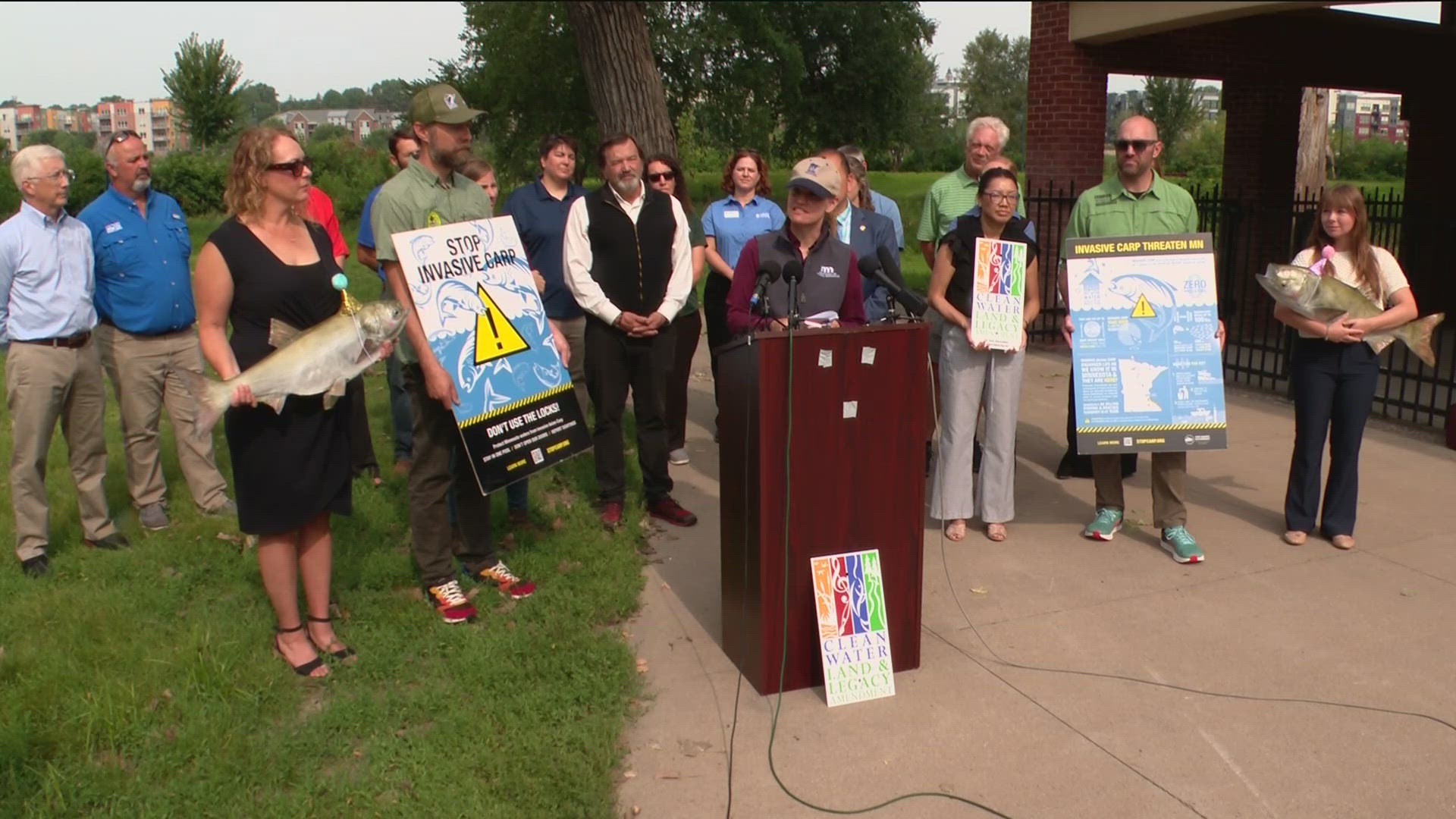ST PAUL, Minnesota — New work is underway to stop the spread of invasive carp in Minnesota's waterways.
"There's so much at stake for Minnesota. The quality of life that we enjoy here in Minnesota is so much linked to water, and sports, and getting out," said Rep. Leon Lillie, DFL-North St. Paul.
During the 2024 session, the legislature passed a $12 million investment to create an invasive carp deterrent system on the Mississippi River at Lock and Dam 5 near Winona.
The Lessard-Sams Outdoor Heritage Council had unanimously recommended the money from the Outdoor Heritage Fund to design and construct a deterrent.
"We are seeing the devastation that can happen when invasive carp spread unchecked and we've learned from downstream and other states what works to stop them from coming upstream in Minnesota," said Sen. Foung Hawj, DFL-St. Paul.
Tuesday morning, the Minnesota Department of Natural Resources, the Stop Carp Coalition, lawmakers and a group of conservation organizations gathered at Harriet Island Regional Park for a press conference on the project.
Invasive carp (silver, bighead and grass) outcompete native fish for food and space, leading to declines in ecosystem diversity and water quality. Silver carp also pose a physical threat to boaters as they are known for leaping out of the water.
Christine Goepfert, co-chair of the Stop Carp Coalition and Midwest campaign director for the National Parks Conservation Association, said about Lock and Dam 5, "A lot of us were just down at that location a few weeks ago and invasive carp were jumping just below that location."
Kelly Pennington, the MN DNR invasive species unit supervisor, said while they do not believe invasive carp are not reproducing yet in Minnesota, "We don't know for sure how much time we have before that reproduction happens."
Colleen O'Connor Toberman, coalition co-chair and land use & planning director for Friends of the Mississippi River said, "We also know that we don't have time to wait. Over the past 18 months, there have been several large carp catches in the Mississippi River not far below Lock and Dam 5, including over 400 fish last November."
Stopping the spread will take a layered approach.
"Deterrents use sound lights or other stimuli to discourage invasive carp from swimming past. There are only two other sound-based invasive carp deterrents that have been installed at locks in the U.S. and we've learned from those experimental installations that they do not completely stop invasive carp from swimming through. Data indicate that they reduce invasive carp passage by about half," Pennington said.
However, the Minnesota Aquatic Invasive Species Research Center "determined that a sweeping sound played in locks, when combined with an air curtain, should stop 99% of invasive carps from passing through while minimizing effects on native fishes."
The project is taking a layered approach to the issue that also will include a trapping system to capture and remove invasive carp and advocating for more research to protect the state's waterways.
Pennington said they have already started scoping the project, saying "This will include determining the deterrent type, the sighting, permitting needs and other factors that will need to be assessed prior to design and construction."
The DNR is partnering with the U.S. Fish and Wildlife Service, the U.S. Geological Survey, the U.S. Army Corps of Engineers and the Wisconsin Department of Natural Resources.
While the deterrent system needs to be installed by the end of June 30, 2029, Pennington said they will be working as quickly as possible.

